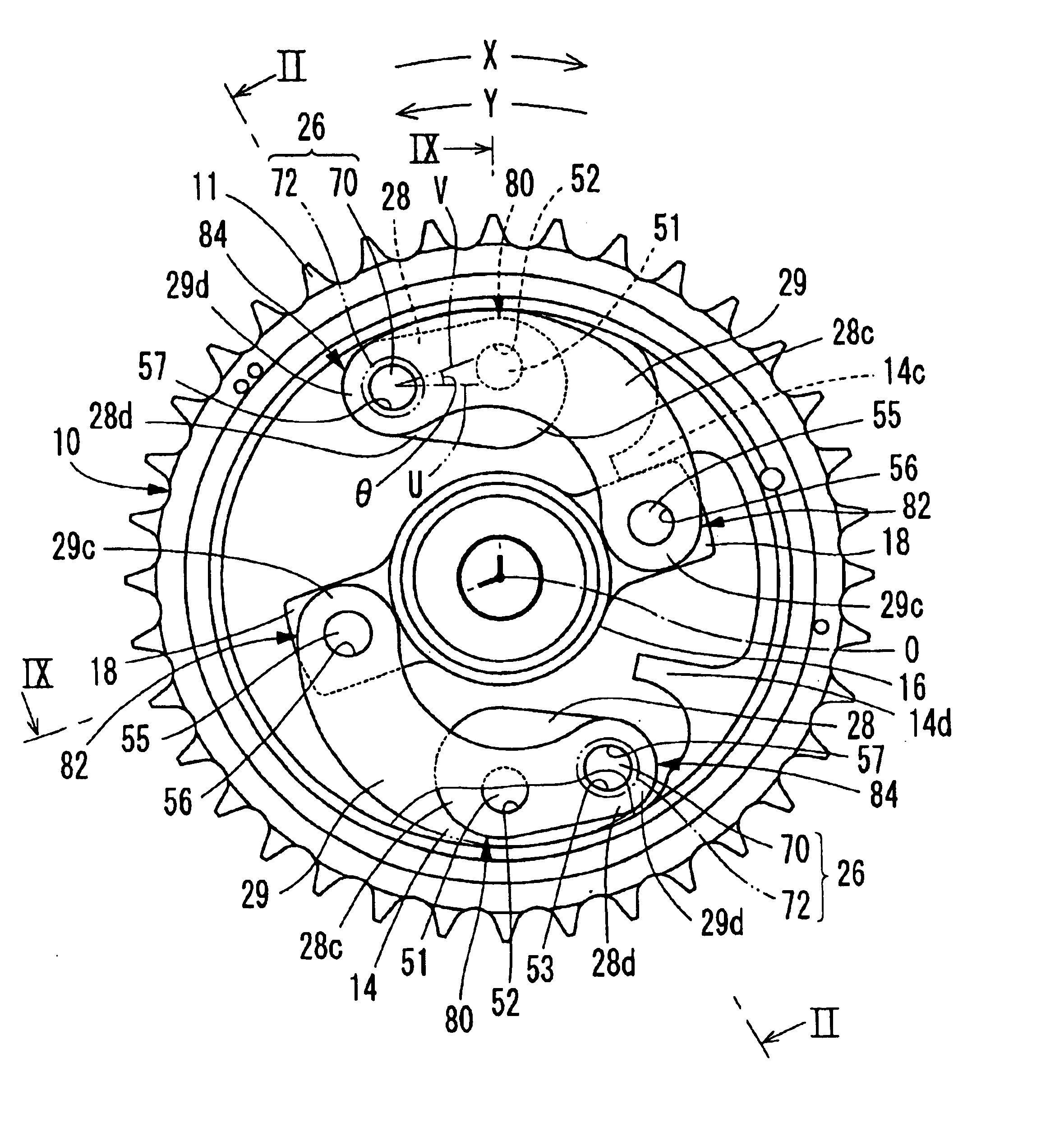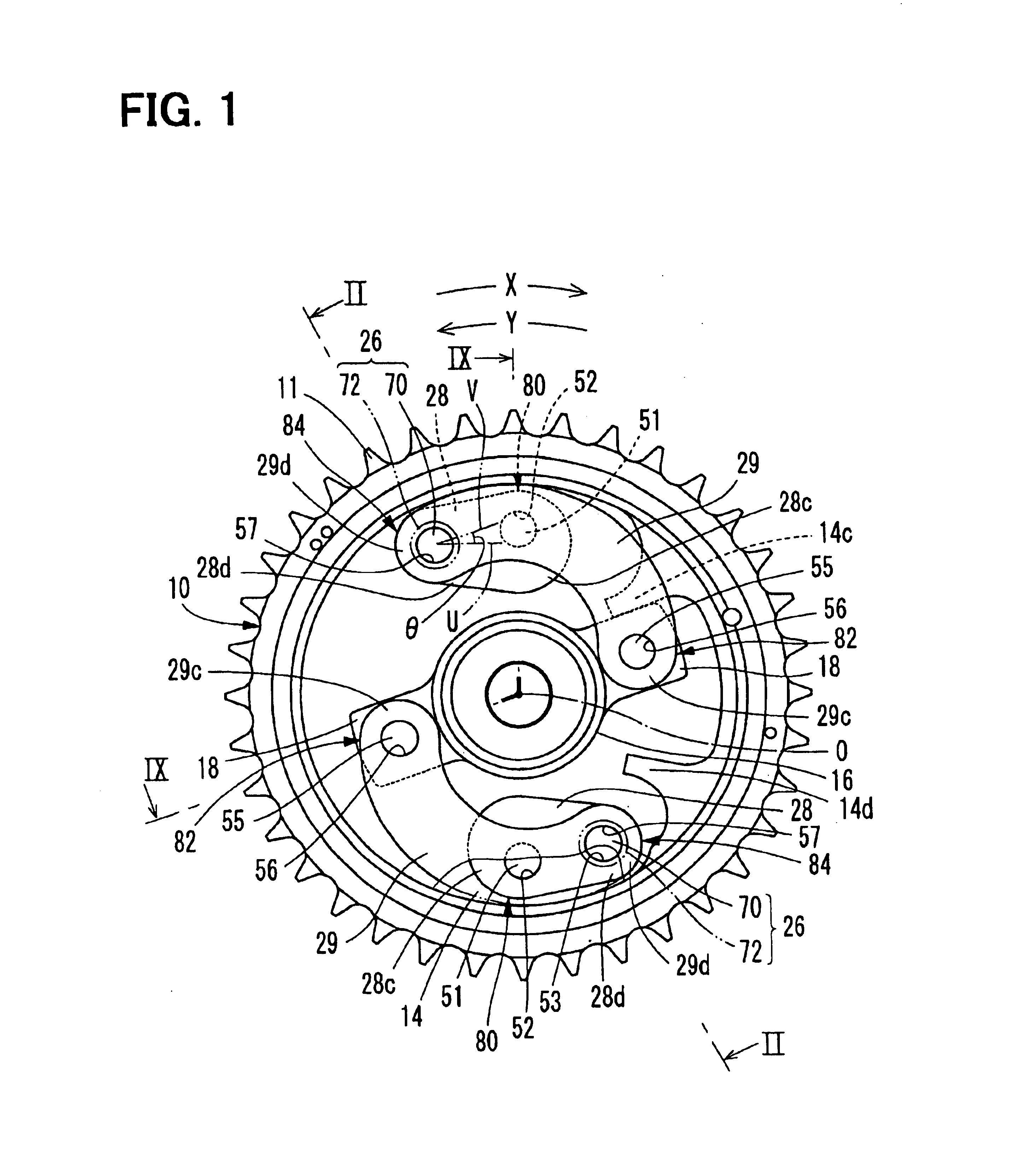Variable valve timing controller
a timing controller and variable valve technology, applied in the direction of valve details, valve arrangements, valve drives, etc., can solve the problem of unnecessarily varying the rotational phase of the driven shaft relative to the driving sha
- Summary
- Abstract
- Description
- Claims
- Application Information
AI Technical Summary
Benefits of technology
Problems solved by technology
Method used
Image
Examples
first embodiment
(First Embodiment)
[0031]FIG. 2 shows a VVT controller according to the first embodiment of the present invention. The VVT controller 1 is disposed in a torque transfer system which transfers the torque of a crankshaft to a camshaft which opens and closes at least one of an intake valve or an exhaust valve. The crankshaft is a driving shaft and the camshaft is a driven shaft in this embodiment. The VVT controller 1 adjusts the valve timing of intake valve by varying the rotational phase of the camshaft 2 relative to the crankshaft.
[0032]A phase adjusting mechanism 10 shown in FIGS. 1 and 2 has a sprocket 11, an output shaft 16, a first arm 28 and a second arm 29. The phase adjusting mechanism 10 varies a rotational phase of the camshaft 2 relative to a crankshaft (not shown). In FIGS. 1, 4, 7 and 8, hatching to show cross section are omitted.
[0033]The sprocket 11 has a supporting portion 12, an input portion 13 having a larger diameter than that of the supporting portion 12, and a li...
second embodiment
(Second Embodiment)
[0059]A VVT controller according to the second embodiment of the present invention is described in FIG. 12. The second embodiment is a modification of the first embodiment, and the substantially same parts and components as those in the first embodiment are indicated with the same reference numerals.
[0060]In the phase adjusting mechanism 100, the first arm 28 and the second arm 29 has the same length and the same angle θ as those in the first embodiment. The revolute pair 82, the revolute pair 80 and the revolute pair 84 are arranged in this order in the delay direction Y to reduce the size thereof.
[0061]The operation of the phase adjusting mechanism 100 is described herein after. When the distance between the movable member 26 and the center axis “O” increase, the first arm 28 moves the revolute pair 84 away from the center axis “O” according to the movement of the movable member 26, and the second arm 29 moves the revolute pair 82 in the advance direction X rela...
third embodiment
(Third Embodiment)
[0064]FIG. 13 shows a third embodiment of the present invention. The third embodiment is a modification of the first embodiment, and the substantially same parts and components as those in the first embodiment are indicated with the same reference numerals.
[0065]A phase adjusting mechanism 150 includes the first arm 28 and the second arm 29 having the same length as those of the first embodiment. The angle θ between the first arm 28 and the second arm 29 varies from 90° angle to 180° angle. The revolute pair 82, the revolute pair 84 and the revolute pair 80 are arranged in this order in the delay direction Y.
[0066]The operation of the phase adjusting mechanism 150 is described herein after. When the distance between the movable member 26 and the center axis “O” increases, the first arm 28 moves the revolute pair 84 away from the center axis “O” and the second arm 29 moves the revolute pair 82 in the delay direction Y relative to the revolute pair 80. Thereby, the o...
PUM
 Login to View More
Login to View More Abstract
Description
Claims
Application Information
 Login to View More
Login to View More - R&D
- Intellectual Property
- Life Sciences
- Materials
- Tech Scout
- Unparalleled Data Quality
- Higher Quality Content
- 60% Fewer Hallucinations
Browse by: Latest US Patents, China's latest patents, Technical Efficacy Thesaurus, Application Domain, Technology Topic, Popular Technical Reports.
© 2025 PatSnap. All rights reserved.Legal|Privacy policy|Modern Slavery Act Transparency Statement|Sitemap|About US| Contact US: help@patsnap.com



